1. Olde World Techniques & Methods
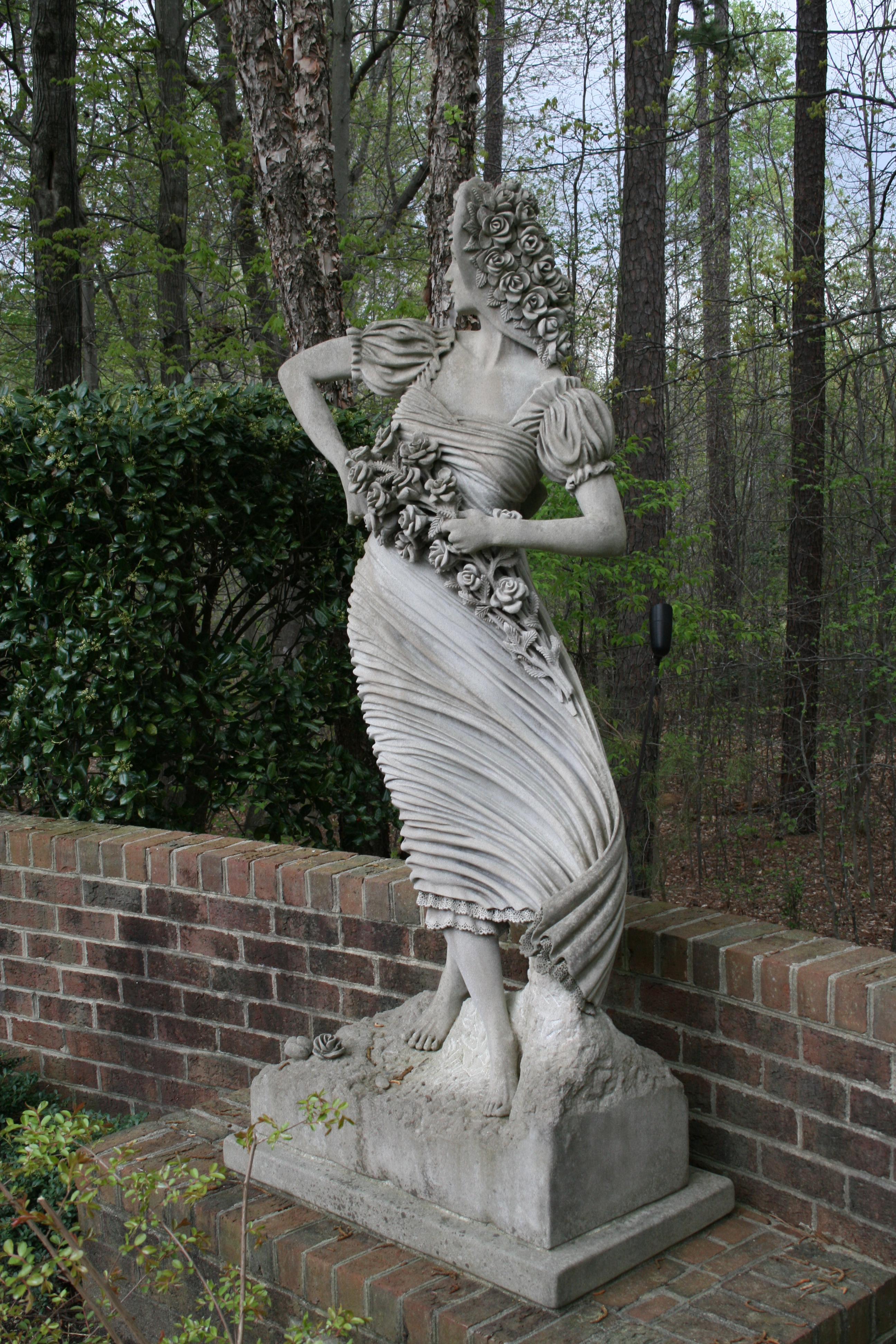
Carl Tucker, Clerk of the Works of Washington National Cathedral, who oversaw the stone carvers of the sixth largest Gothic cathedral in the world, called Mihaly's Infant Phenomenon, above, "the finest carving I've ever seen." This recognition led to Robert's later appointment as the cathedral's final Artist in Residence.
Robert Mihaly has three decades' experience as an olde world master sculptor. He has cut and chiseled literal tractor trailer loads of marble and limestone. In addition to marble and limestone sculpture, he's also skilled with other traditional materials such as wood, foam, clay, metal, and glass.
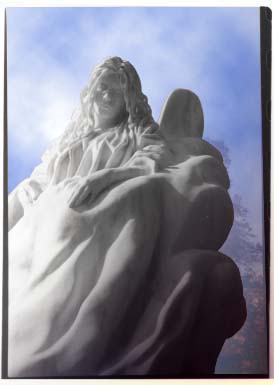
During his 1996-1997 Artist in Residency at the Washington National Cathedral, Mihaly conceived, designed, and a hand carved the 10-ton, marble Wade's Angel. He completed the sculpture during his tenure as Adjunct Professor and Artist in Residence at Meredith College, now Meredith University. One cannot easily see from the ground, but the angel is embracing a likeness of Wade's face, which faces heaven, emerging from the clouds. Robert, John and Elizabeth made this design, because photos of Wade always showed him happily embracing loved ones.
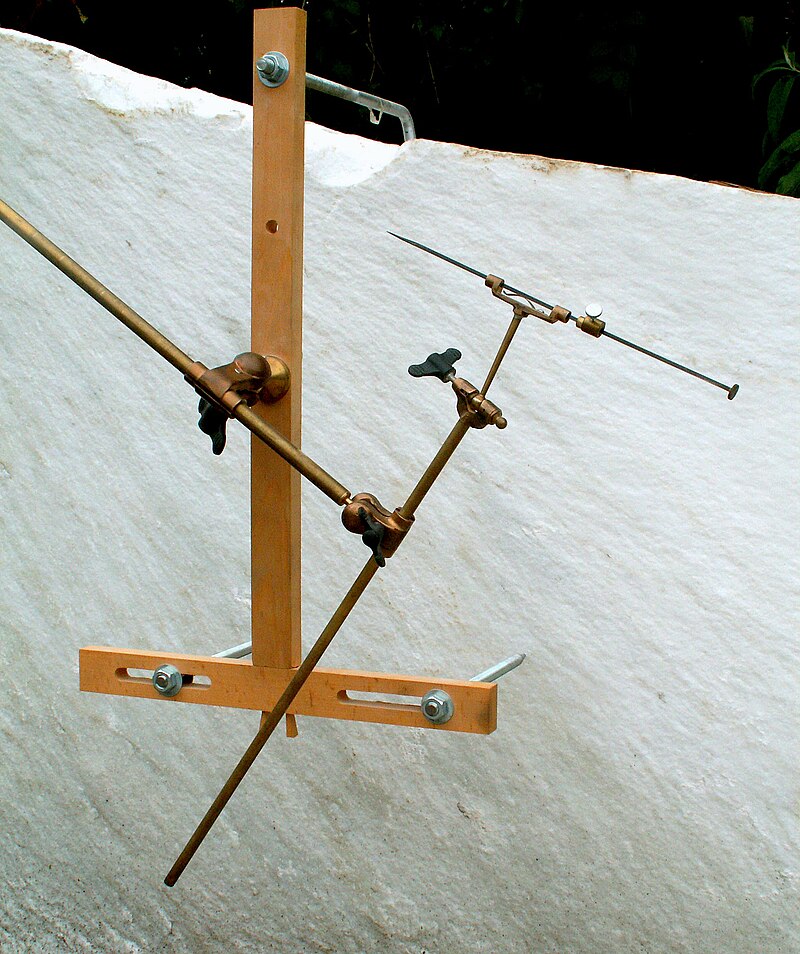
Mihaly's sister Tember posed for the sculpture. Mihaly life-cast her in plaster to assist in his creation of the sculpture. To transfer measurements from the plaster model, Mihaly used an old-fashioned wood and brass sculptor's measuring tool, called a pointing machine. Sculptors have used pointing machines since at least Roman times, though the design was perfected by the marble sculptor Antonio Canova in the late 1700's.
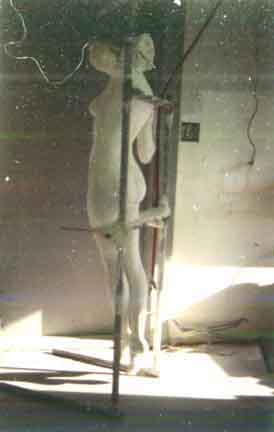
At this point in his career, Robert was executing other life casts in plaster. Dreamer was a full figure, cast from life at that time, by Mihaly. Rodin also studied anatomy through casting in plaster. He cast a plaster mask of Kate Simpson in 1902. He seems to have made casts of Rose Beuret and Camille Claudel as well. Accusations that he might have cast The Age of Bronze (L'Age d'airain), a nude from life, nearly derailed Rodin's career.
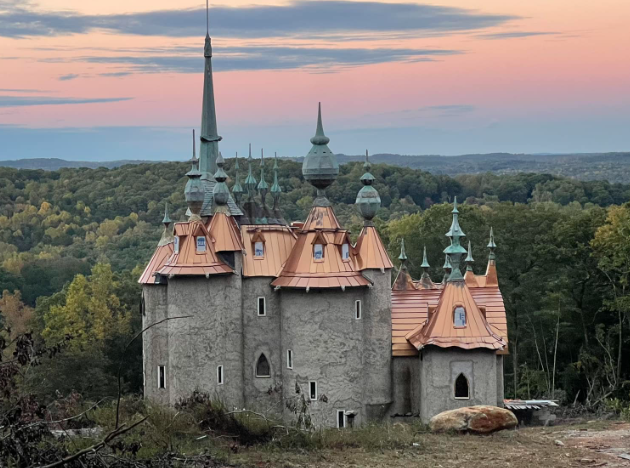
On at least two occasions, grown men cried upon seeing Wade's Angel. Mihaly considers these to be some of the greatest compliments his work has ever received, with the possible exceptions of three times when his artworks were stolen, and also spontaneous kisses and embraces in which lovers are known to engage when they stand before his Castle Mont Rouge.
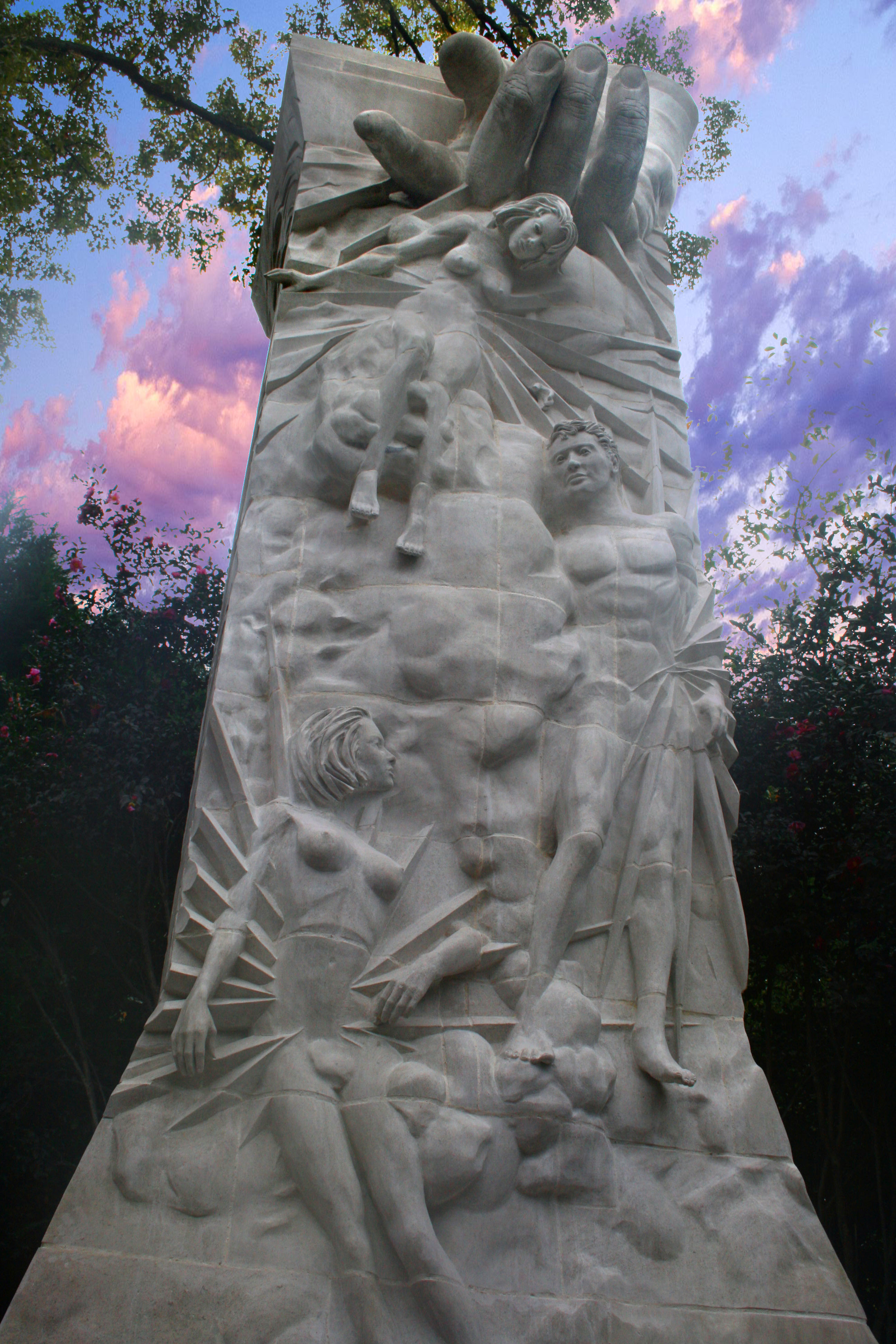
Another work hand-carved by Mihaly is Divina Commedia, 23' feet tall, which features six life-sized figures chiseled in Indiana limestone by Mihaly. This work also features the hand of God. Robert gave the client the option of using his hand to model for God's hand.
When the client didn't jump at the chance, Robert decided to use his own hand. The scale of the hand, about six feet long, was so large, that Robert decided to go ahead and also carve his own fingerprints into several of the fingers. This may have been the first and only time in history that God's fingerprints have been represented in sculpture. As Robert said, "you have to be working on a pretty colossal scale before it occurs to you that there's room to include fingerprints." The fingerprints function as a biometric signature, cut in stone
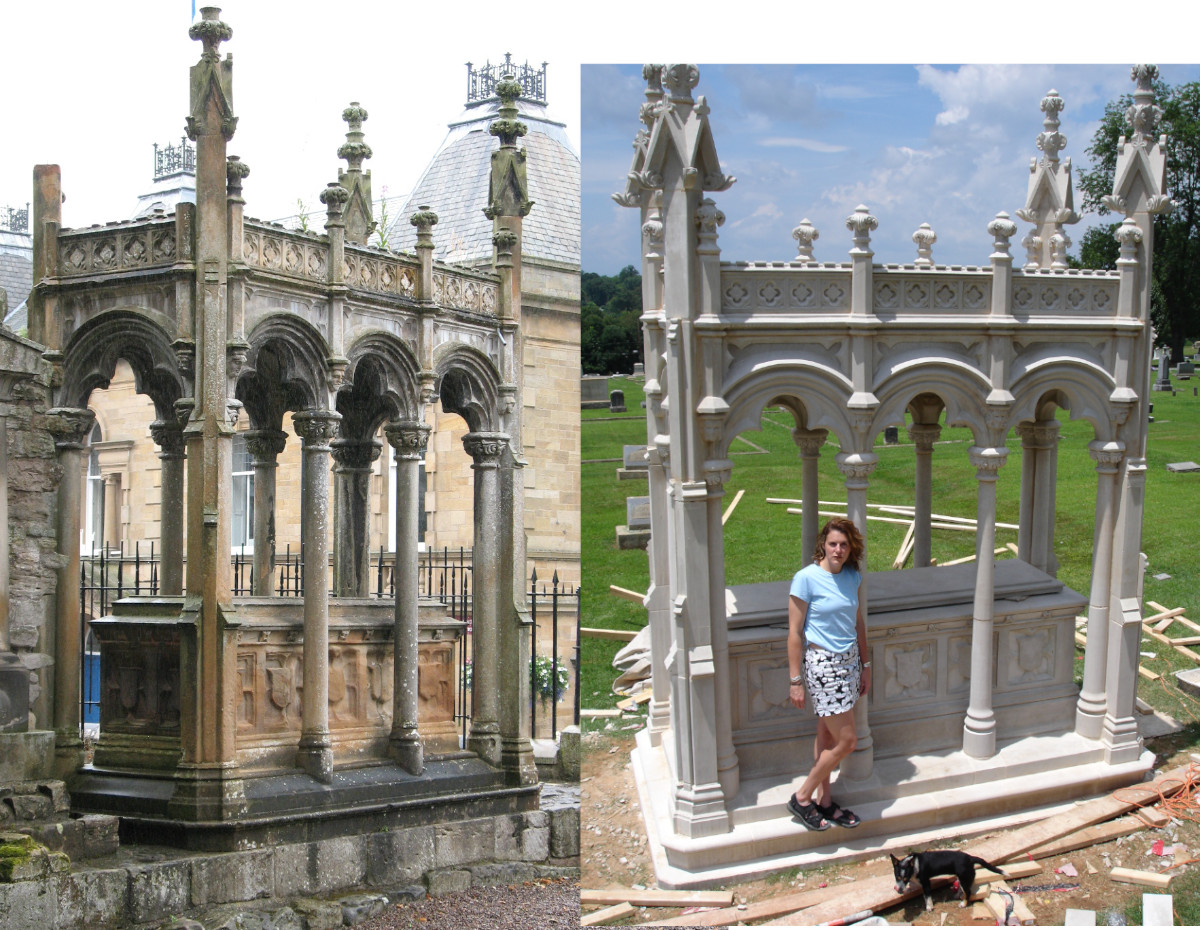
Another hand-carved work by Robert Mihaly is the Fallsoleum. At the client Ralph Falls's request, Mihaly and his romantic partner Caroline Smith traveled to Jedburgh Abbey, Scotland in December, 2003, and took hundreds of photos, with Caroline holding up a ruler in some of the photos, of a Scottish Gothic crypt. From these photos, Mihaly hand carved a perfect replication of the crypt. Mihaly carved both the Fallsoleum and Divina Commedia at Castle Mont Rouge.
2. Contemporary Techniques & Methods
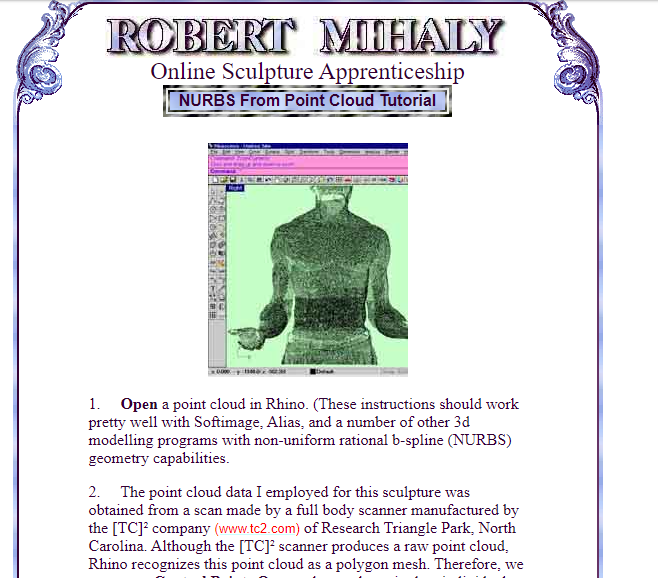
Mihaly was an early adapter and innovator of 3D digital technologies in the world of sculpture. The Internet Wayback Machine shows Robert was teaching 3D scanning techniques and 3D modeling on his website to apprentices as early as 2001.
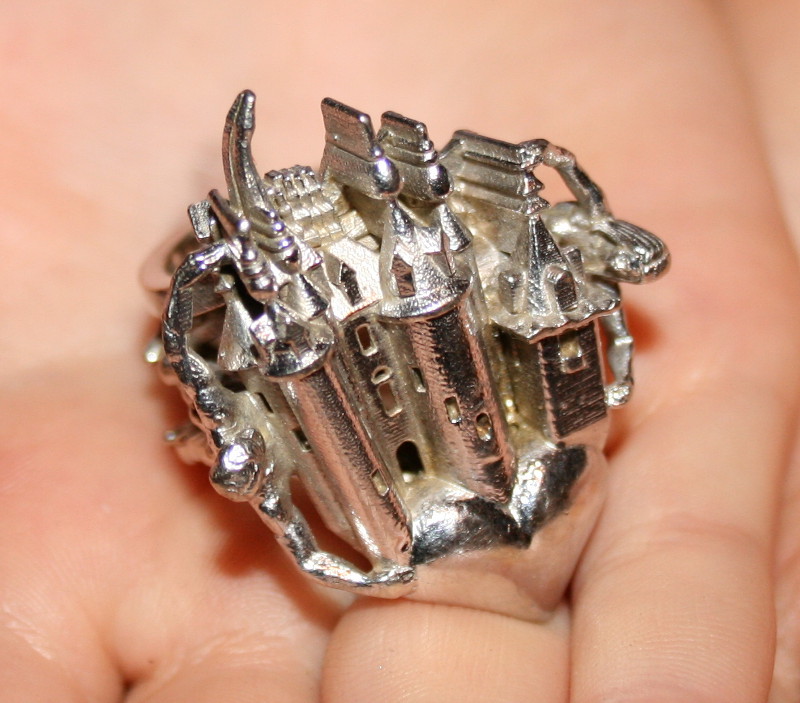
Mihaly modeled Castle Mont Rouge ring in 3D software in March, 2004. The design was 3D printed in wax, then cast in 18k white gold.
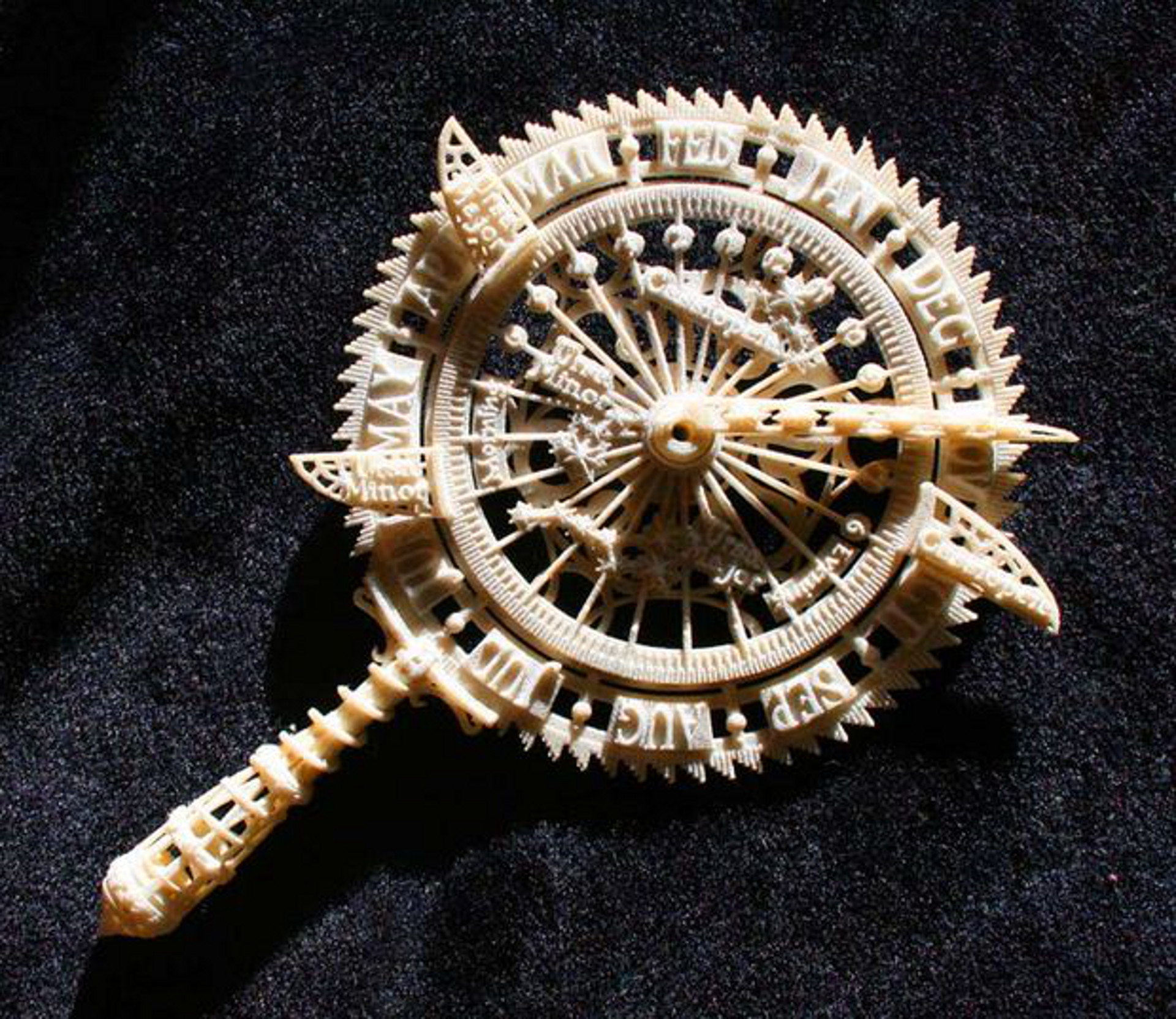
Another example of Mihaly's engineering and 3D modeling is his Nocturnal Celestial Stardial. This fully-functioning machine works like a sundial, but instead of measuring the movement of the Sun, it follows the movement of stars across the night sky.

Mihaly has worked extensively with both laser and structured light 3D scanning technologies for over two decades. Mihaly has personally scanned over 300 people. Mihaly, with client and business partner, Ralph Falls, funded sponsored research in improving 3D-scanning technology at the University of Kentucky's Center for Visualization & Virtual Environments. Here is a fairy-themed likeness sculpture and also a sterling silver likeness pendant Mihaly created, employing 3D scans of his daughter, Chloe.

Mihaly created Self-Portrait in Pizza Crust with dough pressed into a silicone mold he created from a 3D scan of his face.
Mihaly has built and owned both 3D printers and also several 3 & 4 axis 3D CNC routers with which he has carved marble, limestone, glass, granite, wood & foam. Mihaly owned, assembled & used a unique, large-scale 2D CNC painting machine. With it, he painted canvas, wood panels, and other materials up to 10' feet x 16' feet.

Robert modeled this figure in 3D software, then carved it with a CNC machine from an oak tree from his Castle Mont Rouge property.
3. Assistants and Fabricators
The Old Masters heavily relied on teams of assistants. Raphael had a team. Michelangelo had twelve on his team. Rembrandt scholars argue about which of his works were touched by his own hands. Many of Peter Paul Rubens paintings are attributed to his assistant Frans Snyders. More recently, Borglum's Mount Rushmore, Bartholdi's Statue of Liberty, and da Vinci's horse were realized only through teams of workers.
Before his death in 1999, Frederick Hart was hailed as America's greatest living traditional sculptor. His largest and most prominent work, Ex Nihilo on the west facade of Washington National Cathedral, was carved in Indiana limestone by a team which did not include himself. Likewise, the most prominent modern twentieth century sculptors: Botero, Nogichi, Hans Arp Jacques Lipchitz, Henry Moore, and Joan Miro, hired carving studios in the Tuscan town of Pietrasanta near Carrara, Italy to carve their designs in marble.
The practice of fabricator teams and art assistants continues today. Damien Hirst, Marc Quinn, Jeff Koons and Tracey Emin, like their predecessors, outsource marble carving to the carving shops in Pietrasanta. It has traditionally been understood that ten or twenty ton sculptures require substantial teamwork. In spite of this, Mihaly has intransigently carved works of this scale solely by himself.
The two most prominent living visual artists, Damien Hirst and Jeff Koons employ armies of assistants to do their paintings and sculptures. Jeff Koons' Rabbit, a 3-foot-tall stainless steel sculpture, sold for $91 million dollars. Koons employs 150 assistants. In 2011, he told the Wall Street Journal that he himself never wields a paintbrush, and "If I had to be doing this myself, I wouldn't even be able to finish one painting a year." Sometimes, four painters at a time work on one of his canvases.
Damien Hirst shares Koon's processes of art creation, saying he just doesn't have time in his schedule to create his physical art. According to a 2007 Evening Standard article, Hirst paid an assistant £ 600 pounds to do a painting that he sold for £ 600,000 pounds.
The art foundry that created Koons' Rabbit, has also created works for Louise Bourgeois, Botero, Lichtenstein, Noguchi, and Frank Stella. My distant cousin Andy Warhol famously populated his Art Factory with assistants to produce his paintings. Sculptor Donald Judd worked with about thirty different fabricators during his art career.
During his life, Rodin was regarded as the greatest sculptor since Michelangelo. Though Rodin had some ability to carve marble, he directed his carvers with occasional pencil marks and rarely grabbed a mallet and chisel. Generally, Rodin would make a small model in clay or plaster, then have assistants enlarge and carve it. His best known work, The Thinker, was initially twenty-eight inches high. Rodin had assistant Henri Lebosse enlarge it to 79 inches with a machine invented by Achille Collas in 1830, based on a pantograph. A team of skilled assistants creating art for a lead sculptor was normal practice at that time.
Today some sculptors work exclusively on computer screens, others make maquettes from wood, or wet clay, as did Rodin. More conceptual artists such as Sol Lewitt simply describe intended works with words, after which assistants then fabricate the artworks solely based on a few sentences of description.
Robert Mihaly is an Artist's Artist. His natural facility with all manner of traditional methods, modern cutting edge techniques, and conceptual art creation practices bring amazement and joy to both other artists and art appreciators alike.
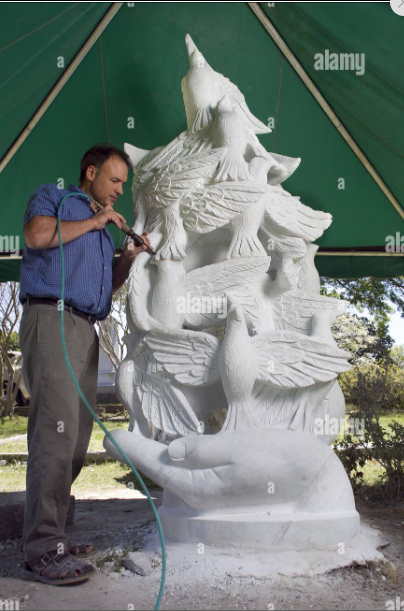
Future Senator John Edwards and his wife Elizabeth Edwards commissioned Robert to create Wade's Angel as a monument to their son. Years later, Cate Edwards commissioned a monument for her mother, Elizabeth Edwards. The large-scale, 10-ton marble sculpture featured Cate's open hands releasing a flurry of doves into the sky, carved from a single block of marble. In preparation for the sculpture, Robert made numerous drawings and small models. Mihaly cast Cate's hands in plaster.
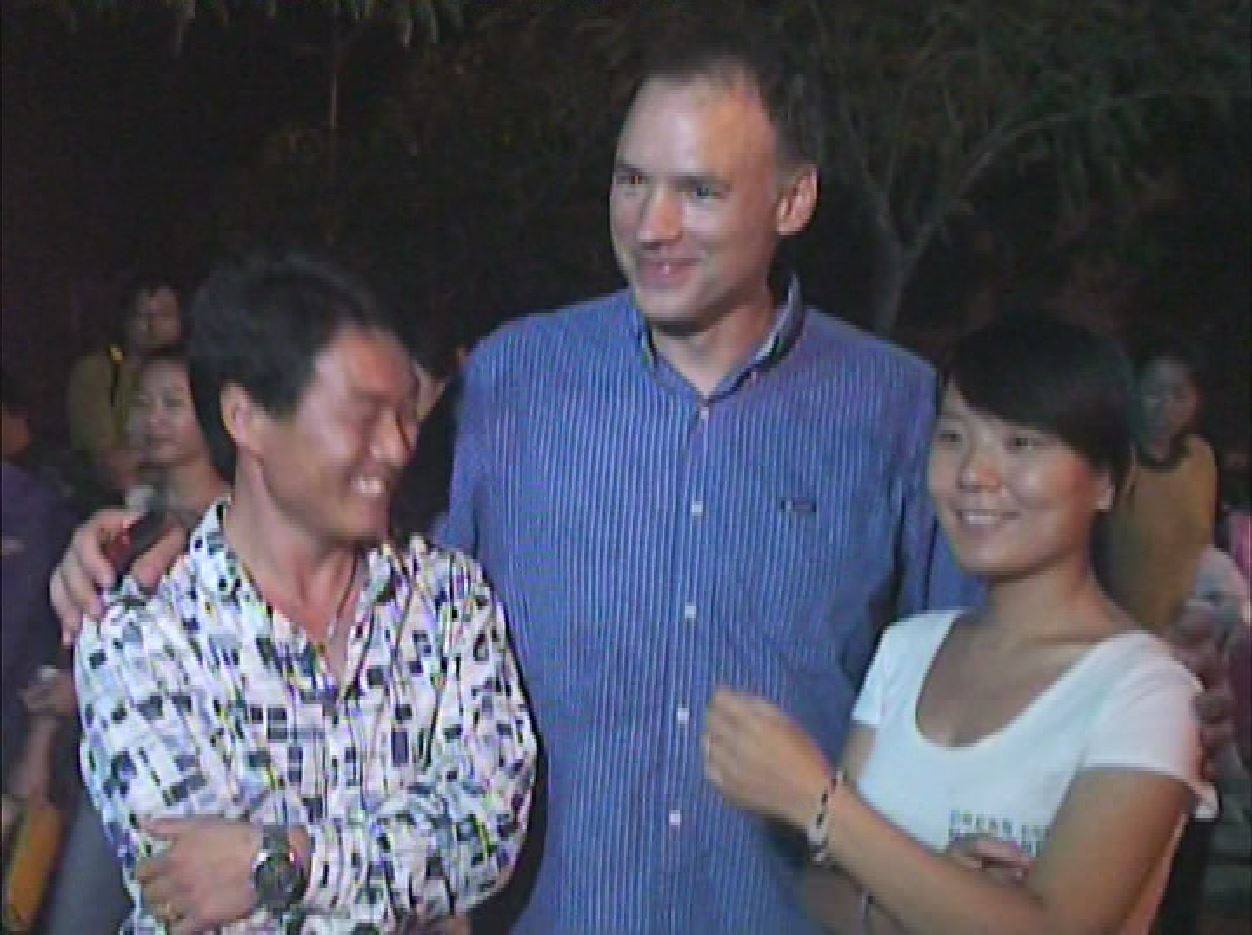
Once he was satisfied with the design, he considered carving studios around the world to assist in execution of the work. He started in Pietrasanta, Italy, a favorite source of contract carvers since Michelangelo's time, and even back to the ancient Romans.
Eventually, after spending several weeks at the eastern foot of the Taihang Mountains, 150 miles south of Beijing, Robert decided to contract with Hallen Yang of Quyang Yiyang Stone Carving Factory there, to complete the bulk of the carving of the sculpture. Mihaly presented a physical model to the carving studio. Quyang County has been known as a center of carving for more than 2,000 years, since the Han Dynasty.

Robert was so excited to find and meet these talented collaborators, he drove all over town buying out paper lantern inventories. He then passed out hundreds of Chinese floating sky lanterns to strangers in the city square of over 100,000 people. Not able to speak the language, he could only gesture that it was fine to take the lighters and lanterns to set them free, filling the sky. It was a spontaneous flash mob art experience, grand and magical for strangers, young and old alike.
After the stonecutters in Quyang completed their work on the sculpture, it was transported by container ship through the Panama canal and to the Port of Wilmington. Mihaly completed carving the sculpture in situ, next to the previously-commissioned monument of Elizabeth's son, Wade's Angel at historic Oakwood Cemetery in Raleigh, NC.
After the marble sculpture was complete, Robert hand-carved gray granite vines, according to Elizabeth's final wishes, which sprouted from the base of the mother's monument, traveled across the ground, and eternally embrace the base of her son Wade's Angel.
Conceptual art is art for which the idea behind the work is more important than the finished art object itself. A master in both old world and cutting edge techniques, perpetually humble Robert jokes, "I want be recognized for my mind, not just my fruits of my craftsmanship."
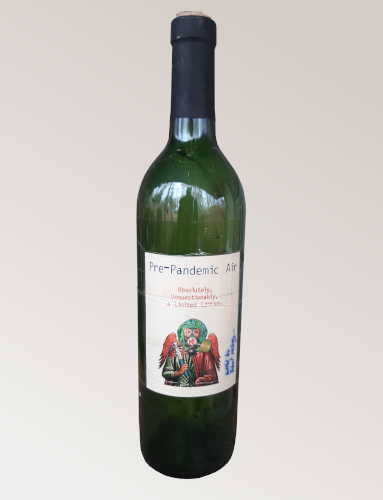
A paradigmatic example of Mihaly's conceptual art would be the wildly prescient art object Pre-Pandemic Air, 2009. Though Mihaly designed the label and inserted the cork in the bottle, the "art": is in no way the craftsmanship involved in these physical acts. Nor is the art the innocent, captured natural atmospheric mountain breezes of Castle Mont Rouge, March, 2009. The art consists of the idea itself, the concept. The bottle, presently available for $5,000, is expected to continue to age well.
"The value of a work of art is not invested in the hand that made it, but in the intention and the realization," says Robert Storr, Dean Emeritus of Yale University's School of Art.

Having expertly created art by an array of techniques and methods throughout his career, Robert recently returned to the simplest, purest artistic expression. Robert has picked up oils and brushes, and resolutely declared Castle Mont Rouge to be his Giverny, that he shall never leave.
Mihaly's simplified path follows that of artists of a century prior. The rise of Impressionists caused assistant-filled studios to fall into disfavor. Artists began to pour their colorful dreams and visions directly, intimately onto canvas. This is the activity in which you will find Mihaly busily engaged today.




















